Telephone Temple
A mash-up architectural style helped save San Francisco's Chinatown and made a utilitarian building a tourist attraction.
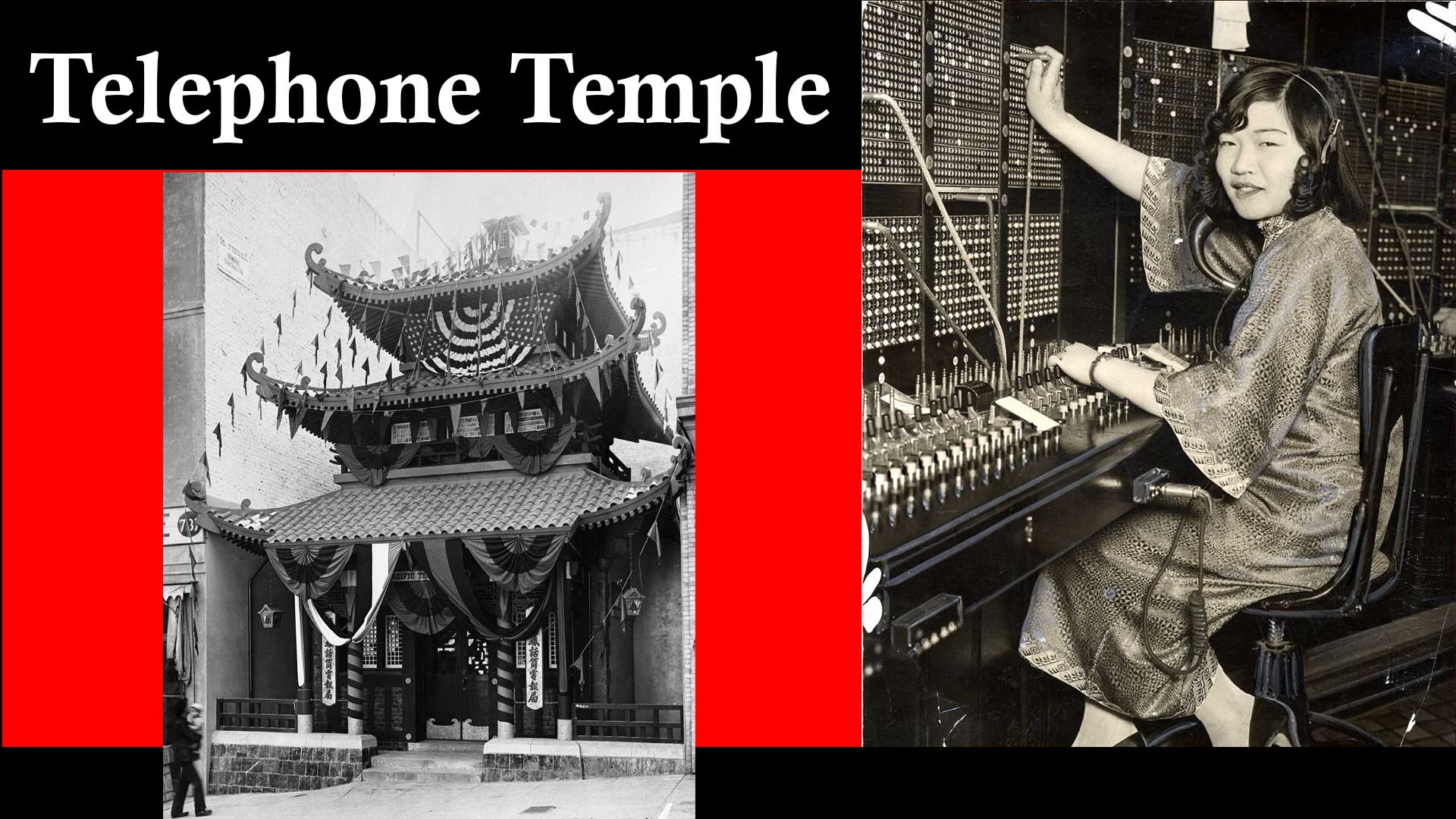
Sometime in the mid 1980s I was waiting in line at a Wells Fargo bank branch on the corner of Grant Avenue and O’Farrell Street. I was a minimally paid “greeter” at the Waldenbooks around the corner on Geary Street and one of the welcome adventures of my working day was being sent to make the daily deposit.
(Note to young people: this is before debit cards, when people wrote personal checks to buy What Color is Your Parachute?, Erma Bombeck anthologies, and Iacocca: an Autobiography.)
The line in the bank was usually long and slow (Note to young people: ATMs were new and for businesses depositing 50 checks at a time, very impractical), but I didn’t mind being away from the store. I also had a fairly innocent crush on one of the tellers and enjoyed watching her work.
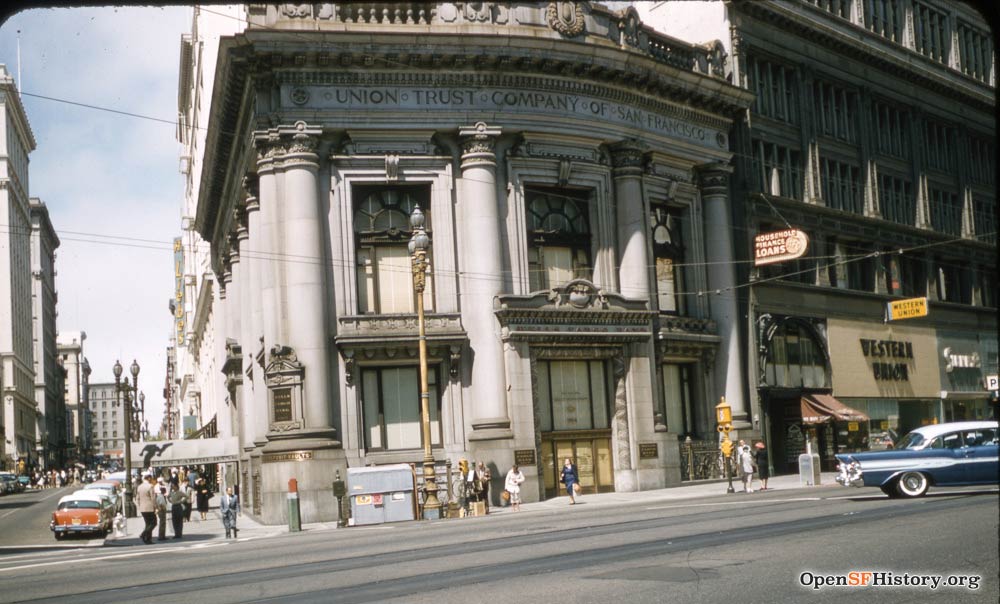
The wait also gave me a chance to admire the bank interior’s gilded details and its coffered ceiling. One time I remarked on the impressiveness of the bank to one of my older co-workers. John often spoke as if he was a Shakespearean actor on break because, well, bookstore life. He replied, “My dear boy, that is a banking temple.”
I thought of John the other day walking up Washington Street past the East West Bank branch at 743 Washington Street. This is a true banking temple:

The late historian and architect Philip P. Choy, writing about the evolution of Sino-American architecture, noted how the pagoda was “engraved into the minds of Western travelers and stigmatizes Chinese architecture to this day.” In Asia, these multi-tiered, multi-eaved towers mark Hindu and Buddhist religious sites. In America, where commerce is the dominant faith, western architects used them to spice up gift shop buildings.
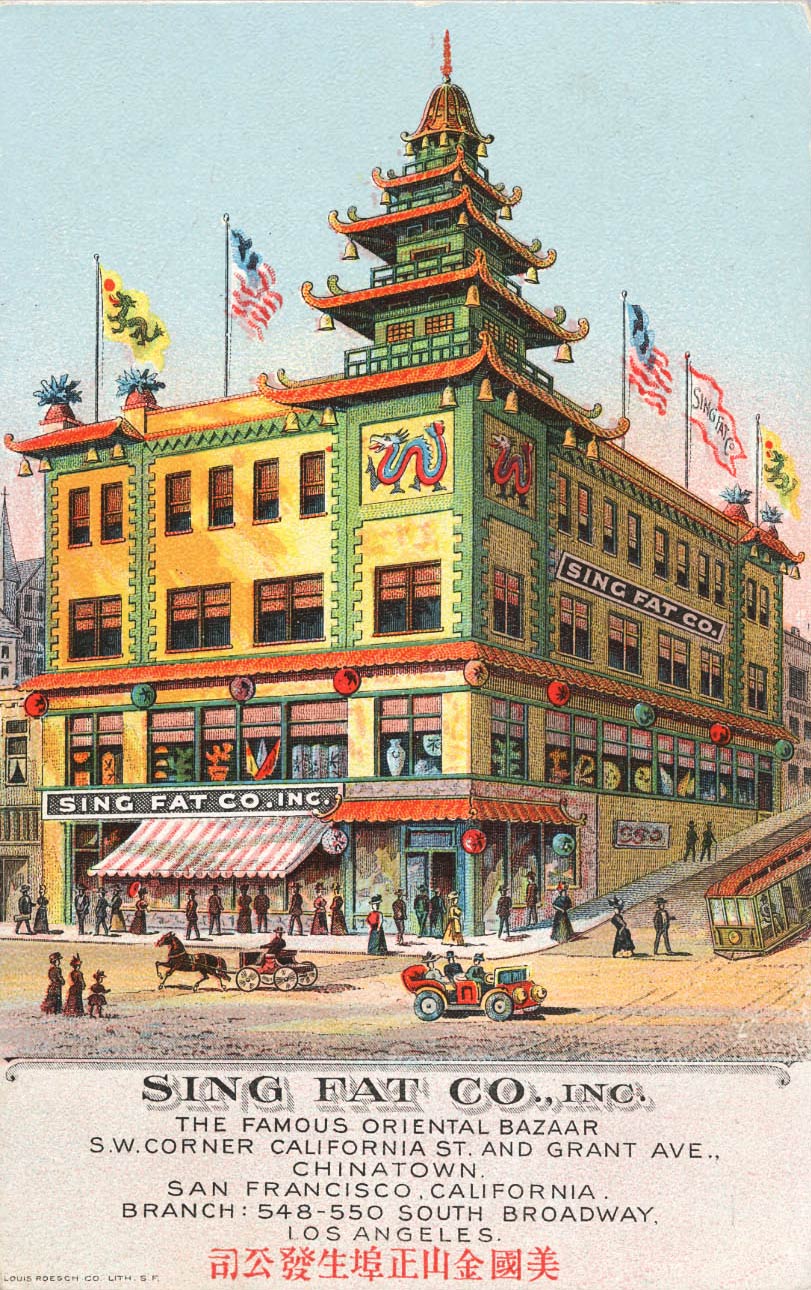
What we think of as touristy Chinatown architecture—brick buildings with Mission tile roofs, Neoclassical Corinthian capitals, wrought iron balconies, curled eaves covered in garish red, green, and yellow paint— all of that is a San Francisco phenomenon, an unreal romantic western idea of an exotic Orient.
It is also an architectural style choice which helped save the Chinese community from forcible expulsion after the 1906 earthquake and fire.
In 1905, a Board of Supervisors’ subcommittee proposed removing the “standing menace of Chinatown,” meaning vice, disease, and very frankly and openly, Chinese people. Everybody in Chinatown would be exported to a new “oriental city” on bay marsh land near Visitacion Valley, far away from white “progressive” sensibilities.
In the immediate aftermath of the earthquake and fire, with Chinatown left in rubble, this big idea suddenly was possible.
But Grant Avenue merchants got ahead of any relocation plans by quickly rebuilding a new-look Chinatown. The Sing Chong and Sing Fat buildings, owned by Look Tin Eli and Tong Bong, set the tone on the western corners of Grant and California Streets. Built in 1907 and 1908, and designed by the firm of Ross & Burgren, they are seminal examples of what some architectural historians call “Chinatown Renaissance” style.
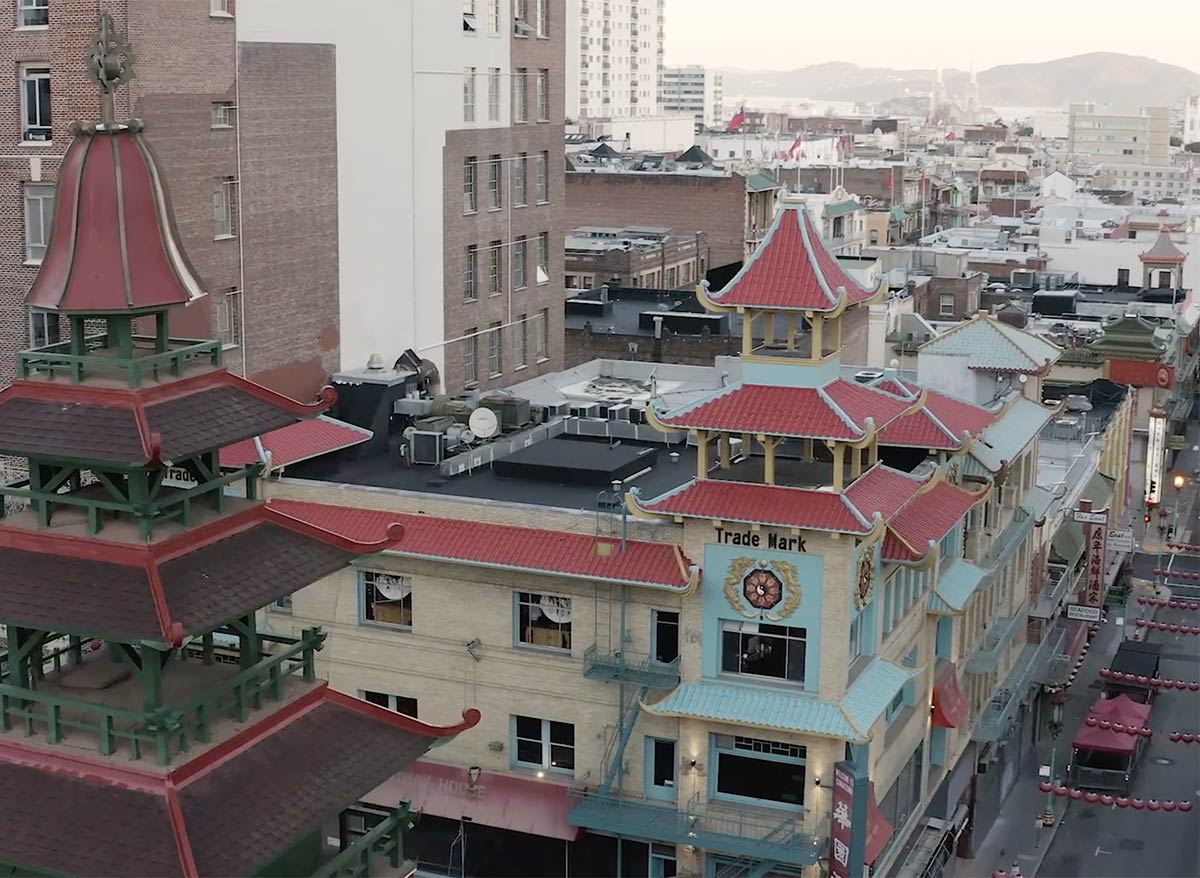
These colorful mash-ups of Western and Eastern styles satisfied white society’s appetite for the controllable picturesque: someplace foreign, but not too foreign, drawing in tourists and selling souvenirs.
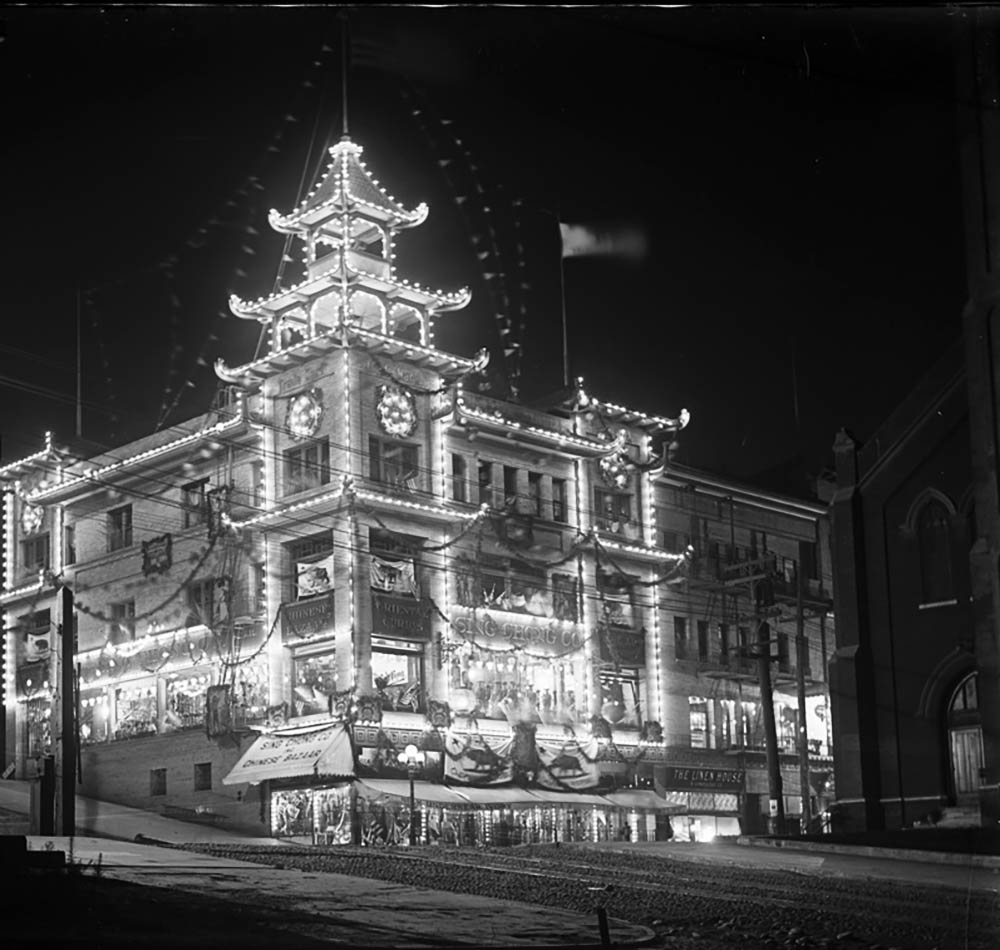
What is now the East West Bank at 743 Washington Street was constructed in 1909, right on the heels of the Grant Avenue bazaar buildings.
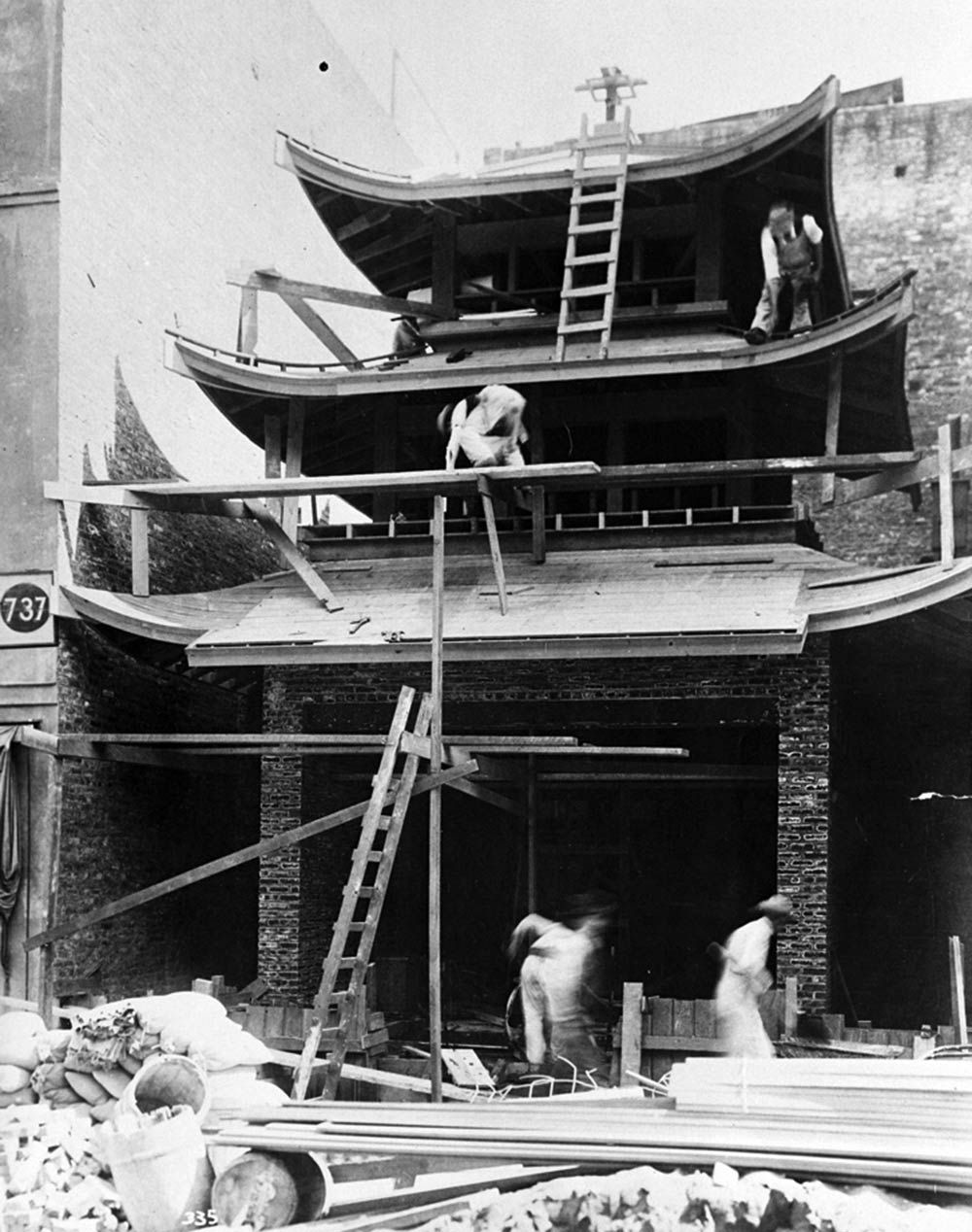
But our banking temple did not start as a bank. It has a more interesting origin story as the Chinese Telephone Exchange, where operators worked switchboards to connect callers before dial telephones took over in the 1940s.
There are a number of good stories (and some weird video) about the amazing women who remembered more than you and I have forgotten in our lifetimes just in service of putting one specific person in touch with another specific person.
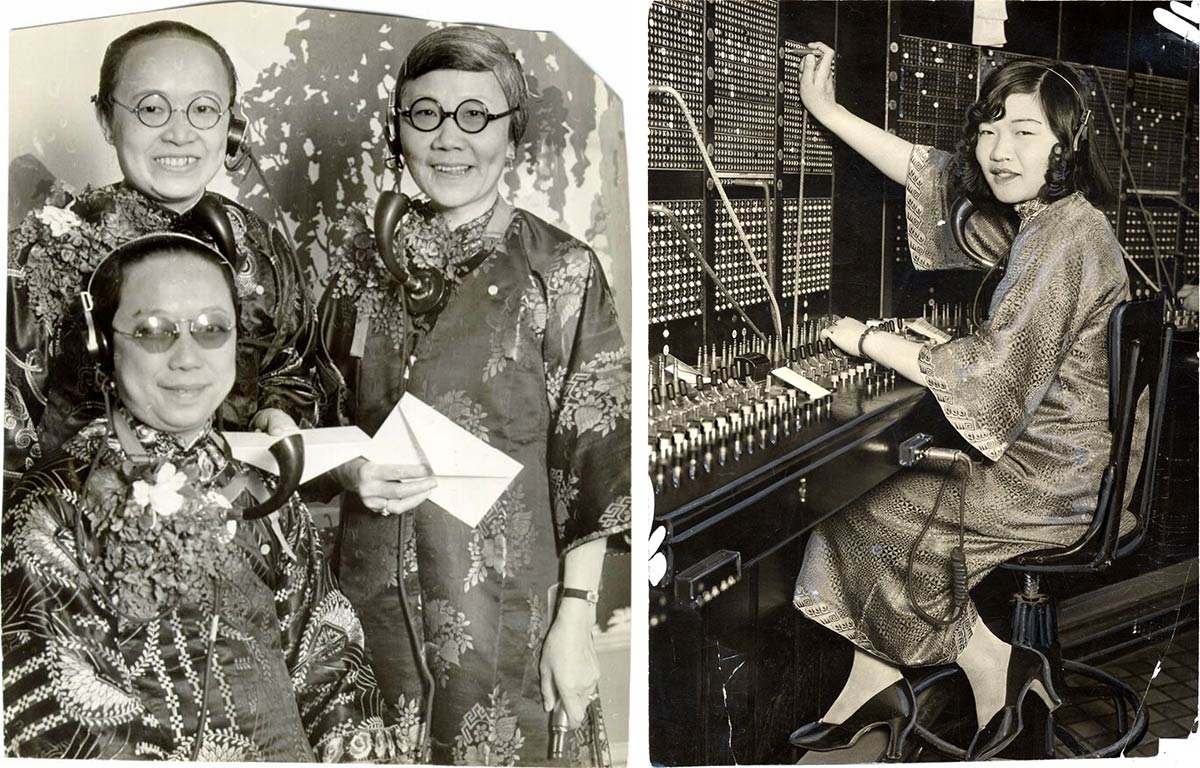
The exchange did real work providing phone service, but it also quickly became a tourist attraction.
As early as 1910, newspaper reporters were doing features on the “hello girls” and the beauty of the building: “the quaintest, most picturesque little pagoda [...] So typically Chinese that it might have been lifted from the very heart of the Flowery Kingdom.”
There were lots of the usual racist stereotypes of Chinese women as meek, dainty, and compliant with the typical sexist angles on their appearance, but the articles also marveled at the operators’ language skills and their ability to memorize up to 3,000 individual lines for connection.
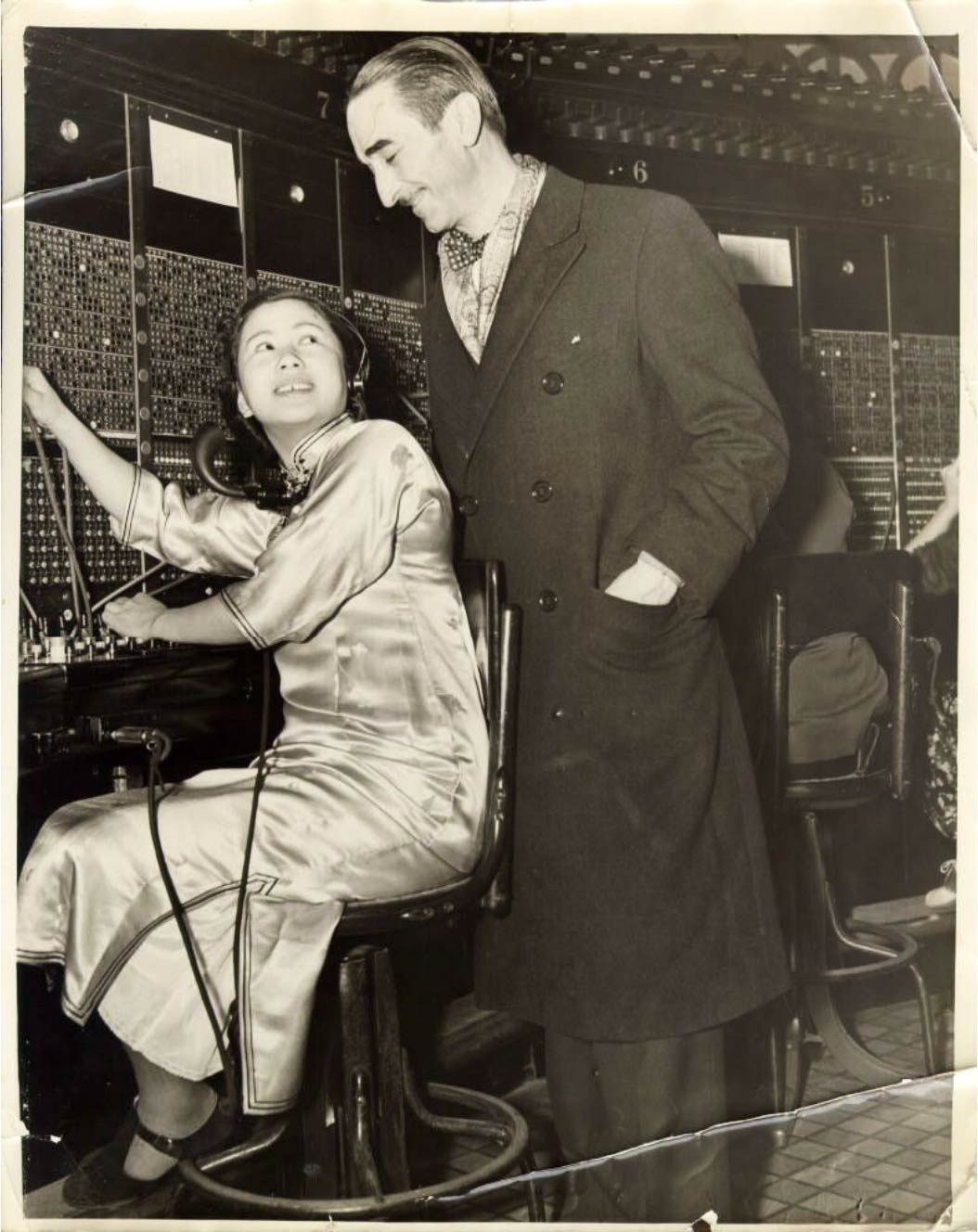
While understanding this is all public relations in the service of a corporation, and that many would find such Disneyfication distasteful, I am in favor of creative imaginings for utilitarian structures.
They don’t have to be temples. Instead of disguising cell phone towers as pine trees, let us make them look like 1920s space rockets. Those utility boxes on every corner? Paint them stone and have a faux Excalibur sword come out their tops. Square PG&E substations could be giant fuzzy die…
Any other ideas? Who is with me?
Before the Earthquake
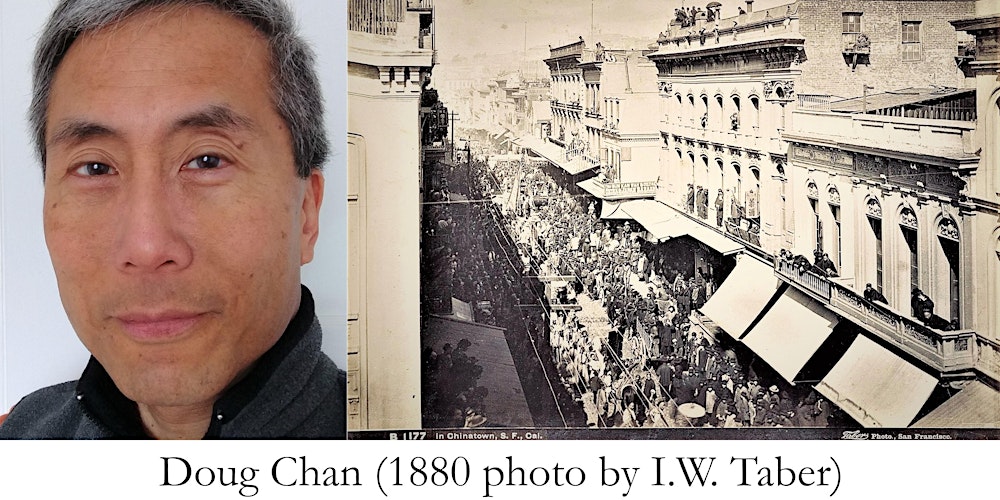
Coincidentally, next week you have a chance to learn more about the Chinatown landscape before the 1906 earthquake and fire.
Next Wednesday, August 16, 2023, Doug Chan, president of the Chinese Historical Society of America, will be giving an illustrated tour of pre-quake Chinatown’s unique architectural landscapes, bustling streets, and intimate domestic scenes—all through historical photos.
This is an in-person event at San Francisco Heritage’s Haas-Lilienthal House, 2007 Franklin Street. I’ll be there! Get your tickets before the room fills up.
Woody Beer and Coffee Fund

I heard some great stories from San Francisco State professor emeritus Bob Cherny on a walk around Sunset Heights. They were mostly about Pat McCambridge, a colorful grocer of the past—my kind of history! Thanks to Woody Beverage Fund donations, we enjoyed chai lattes with our chatter. Big shout out to Mike D. (F.O.W.) for kicking in this week!
Is it your turn? Chip in and let me know when you might be free.
Sources
Philip P. Choy, The Architecture of San Francisco Chinatown (San Francisco: Chinese Historical Society of America, 2008).
Great video (and drone footage) on the origins of Chinatown Renaissance style from Vox:
Merchants’ Association Review, February 1905.
“Plan to Build an Oriental City,” San Francisco Chronicle, April 27, 1906, pg. 9
Katherine Atkinson, “Where the Hello Girls are Dainty Chinese Maids,” San Francisco Sunday Call, April 24, 1910, pg. 8.


